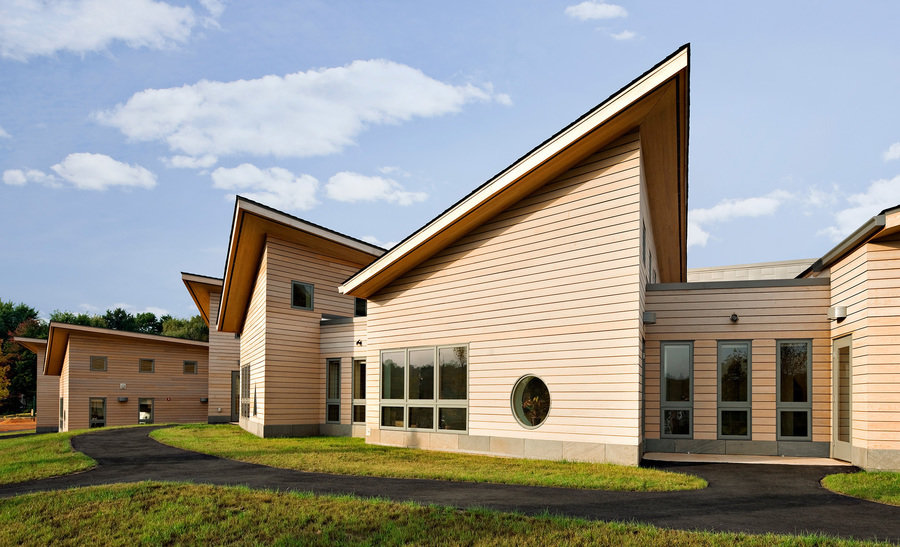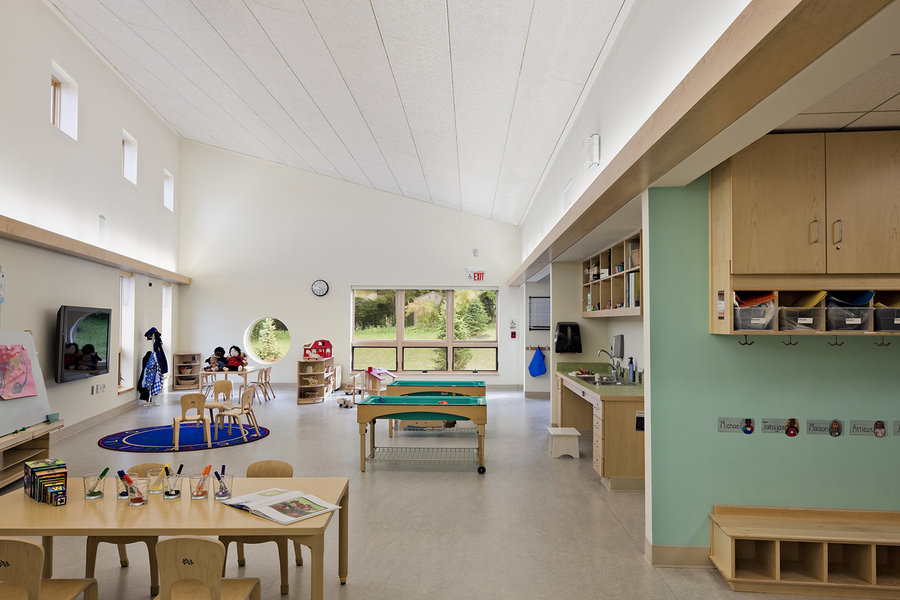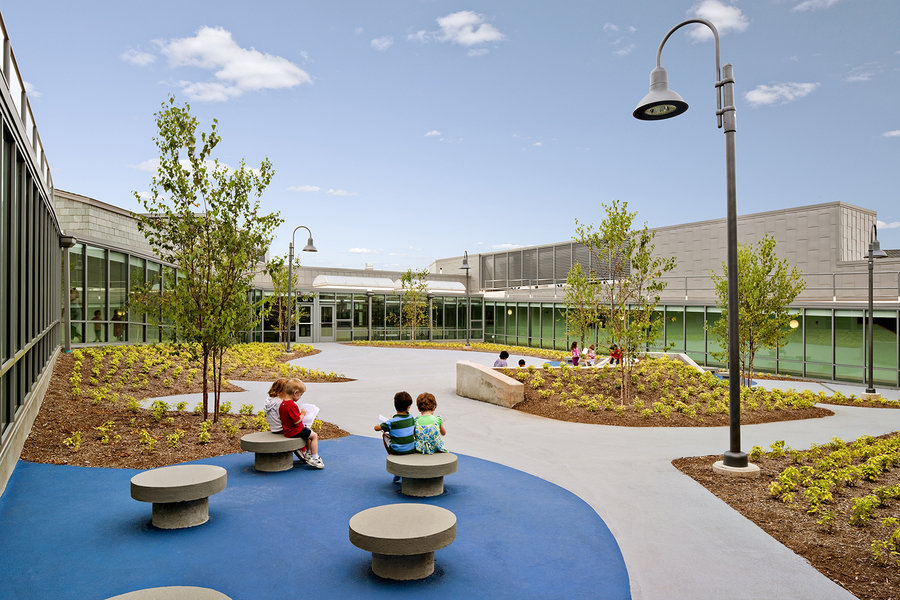
The Wintonbury Childhood Magnet School was designed based on the Reggio Emilia Educational Philosophy, which believes that children can lead their learning path at their own pace. This translates to an environment where students learn through discovery. The Scots College in Australia defines the ideal setting as:
“A Reggio-inspired environment often referred to as ‘the third teacher’, is open and free-flowing. It enables uninterrupted exploration, play, and learning. In addition, it is important that children have free access to stimulating resources, as they cannot be the owner of their learning journey without this.”


Designed by Tai Soo Kim, the unique pinwheel-shaped design supports the Reggio Emilia approach with an entry and circulation pattern enveloping a central courtyard and uniquely shaped classrooms oriented to the surrounding outdoors.
Each classroom is expressed structurally as a farm-like shed to support the agricultural curriculum. To enhance creative play, the classrooms feature a variety of spaces: an exploration area, a computer station, and a cozy corner, as well as one large and one small area for creative activities. The classrooms are defined by high and low ceilings, non-parallel walls, various geometric-shaped windows at the children’s height, and direct outdoor access.

The site includes three outdoor learning areas: a gardening area, an area of dramatic play (emphasizing language and literacy), and a playscape for climbing, swinging, and tricycle riding.
Case Study: Wintonbury Early Childhood Magnet School
READ MORE LIKE THIS:
PROJECT SPOTLIGHT: American School for the Deaf - Gallaudet-Clerc Education Center
PROJECT SPOTLIGHT: The Widmer Wing - UConn School of Nursing
Share: